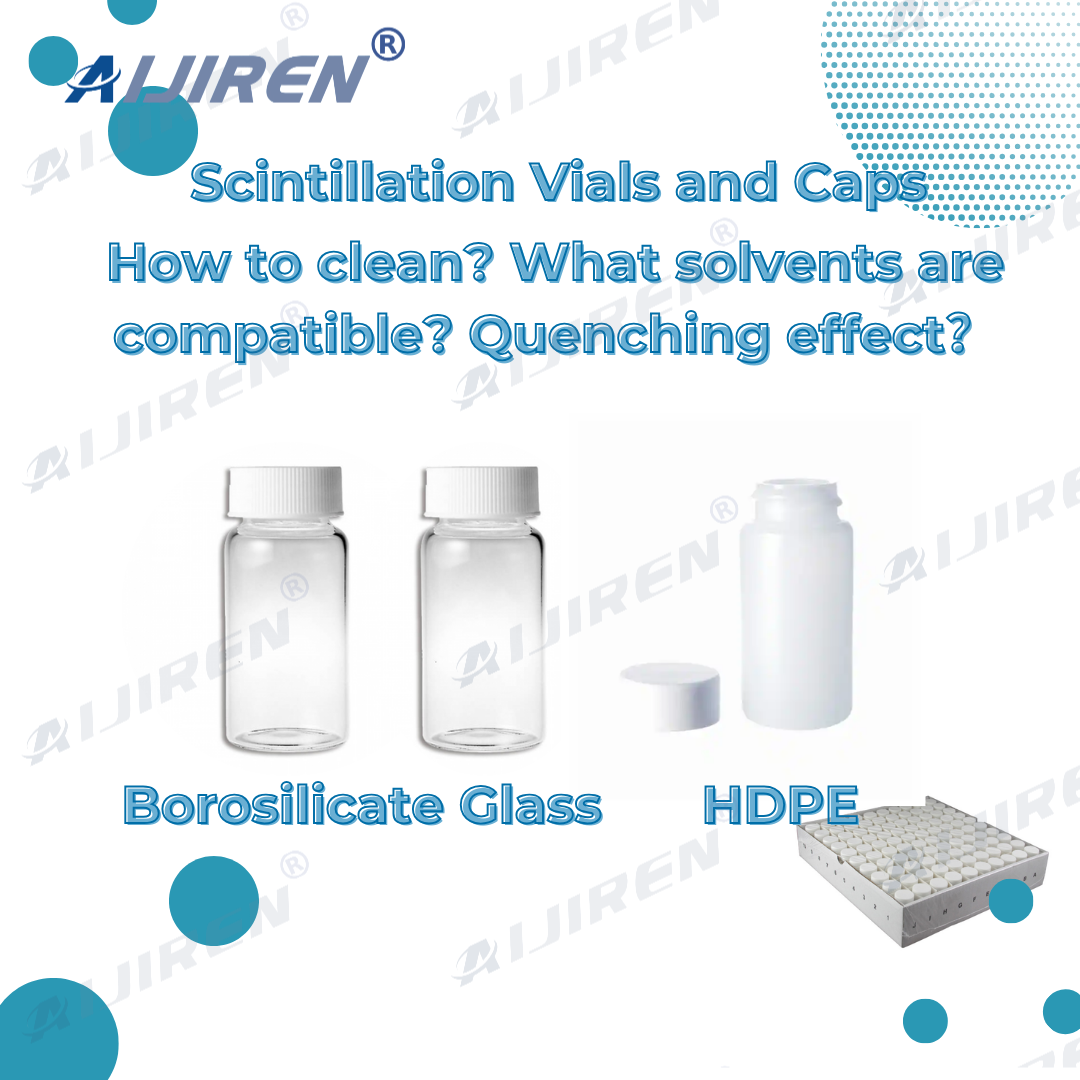20mL Scintillation Vials Usage Guide: 5 Common Experimental Errors and Solutions
This article aims to assist laboratory researchers in identifying and correcting five common operational errors associated with the use of 20mL scintillation vials in radioactive sample analysis.
Minor mishandlings, such as improper sealing or inadequate cleaning, can lead to significant data deviations, with studies indicating up to a 30% variance in results.
The article delves into issues like sealing inadequacies, reuse of uncleaned vials, neglecting chemical compatibility between vial materials and reagents, improper storage leading to contamination, and volume misjudgments causing quenching effects.
By offering detailed solutions and experimental validation data, the article guides researchers in optimizing their experimental procedures to ensure data accuracy and reliability.
1. Introduction: Minor Mistakes, Major Consequences
In radioactive sample analysis, minor mishandlings of 20mL scintillation vials can lead to data deviations of up to 30%, with many researchers unaware of the underlying issues.
According to data from international suppliers such as Thomas Scientific, improper use of scintillation vials accounts for up to 17% of experimental repeat rates.
2. Five Common Errors and Their Solutions
Error 1: Inadequate Sealing Leading to Sample Volatilization
Typical Scenario: Only rotating the cap by 1/4 turn, failing to achieve the CS222 cap design’s 3/4 turn sealing standard.
-
Elevated background values in β-ray detection.
-
Distorted count rates in low-activity samples.
Solution: Ensure the cap is tightened to the design standard, using caps with polyethylene cone liners to enhance sealing integrity.
Error 2: Reusing Vials Without Thorough Cleaning
Residual Risks: Toluene-based scintillation liquid residues may cross-contaminate with water-soluble reagents.
Cleaning Recommendations:
| Material | Recommended Cleaning Agent | Maximum Reuse Times |
|---|---|---|
| Glass (VS2017) | Chromic acid wash → Ultrapure water | 50 times |
| HDPE | Ethanol ultrasonic → Nitrogen drying | 30 times |
Choose appropriate cleaning methods based on material to ensure sample purity.
Error 3: Ignoring Chemical Compatibility Between Vial Material and Reagents
Compatibility Comparison:
| Reagent Type | Glass | HDPE | PET | PP |
|---|---|---|---|---|
| Toluene/Xylene | ✓✓✓ | ✓✓ | ✗ | ✓✓✓ |
| Strong Acid (pH<2) | ✓✓✓ | ✗ | ✗ | ✓✓ |
| Acetone | ✓✓ | ✓✓✓ | ✓✓ | ✓✓ |
Select vial materials compatible with your reagents to avoid chemical reactions that could affect experimental results.
Error 4: Improper Storage Leading to Physical Contamination
Case Comparisons:
-
Upright storage vs. horizontal storage leading to crystallization at the vial mouth.
-
Insufficient light protection causing fluorescent background noise.
Recommendation: Choose original brown glass versions (VS2017B) or HDPE light-shielding vials to handle light-sensitive samples.
Error 5: Volume Misjudgment Leading to Quenching Effects
Key Data: When the actual fill volume of a 20mL scintillation vial exceeds 18mL, the detection efficiency of the liquid scintillation counter decreases by 12-15%.
Operational Standard: Use the shoulder marking technique to ensure the fill volume is within the recommended range.
3. Experimental Validation and Technical Data Support
-
Third-party tests show that using properly sealed CS222 caps results in tritium-labeled substances having a preservation loss rate of less than 0.5% over 8 weeks, compared to 7.2% with ordinary caps.
-
Glass material VS2017 exhibits zero breakage rate in temperature variation tests ranging from -196°C to 150°C, ensuring stability under extreme conditions.







